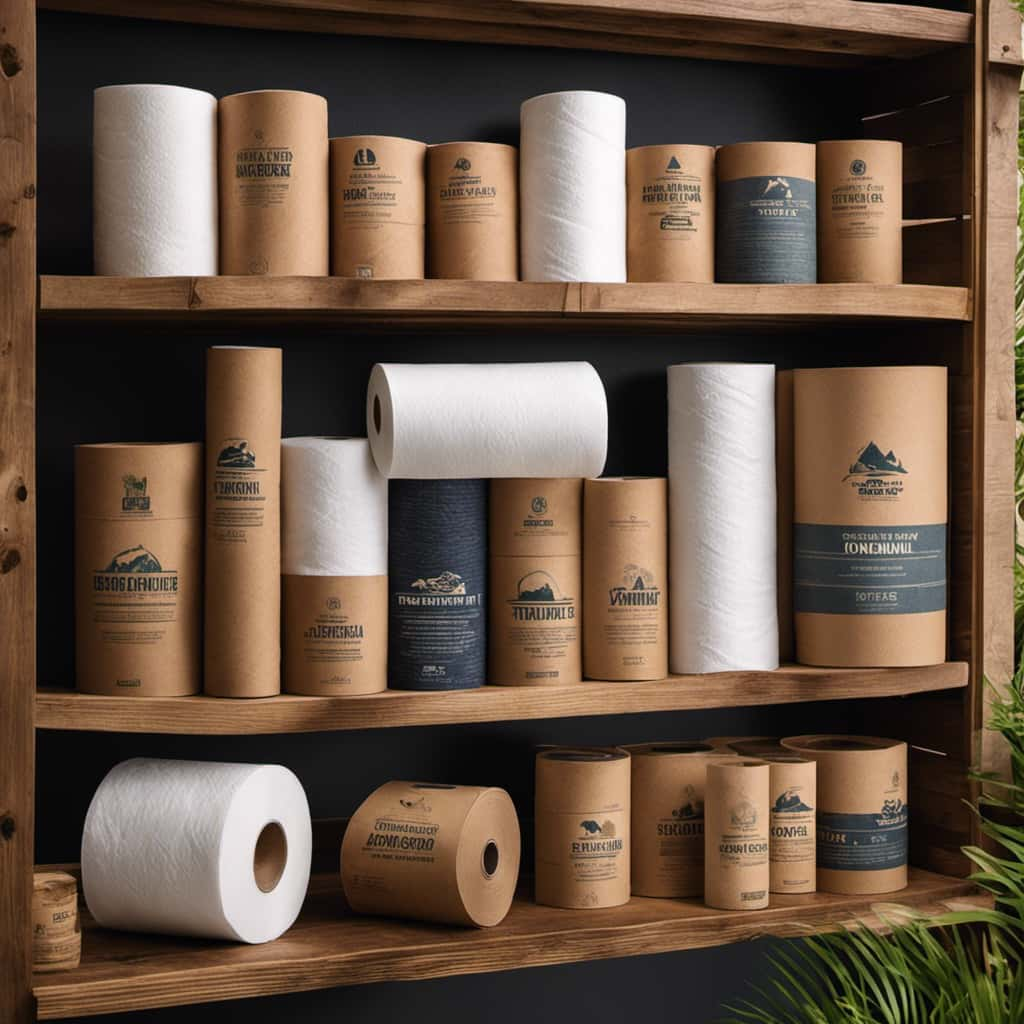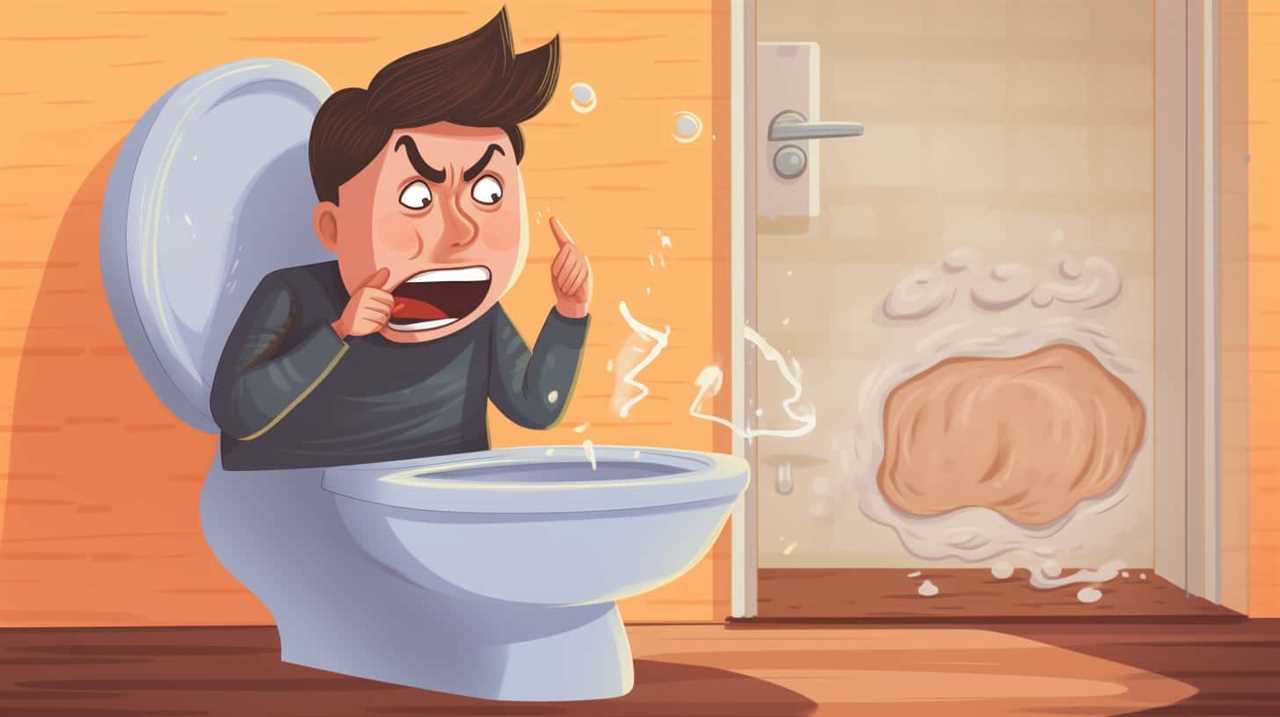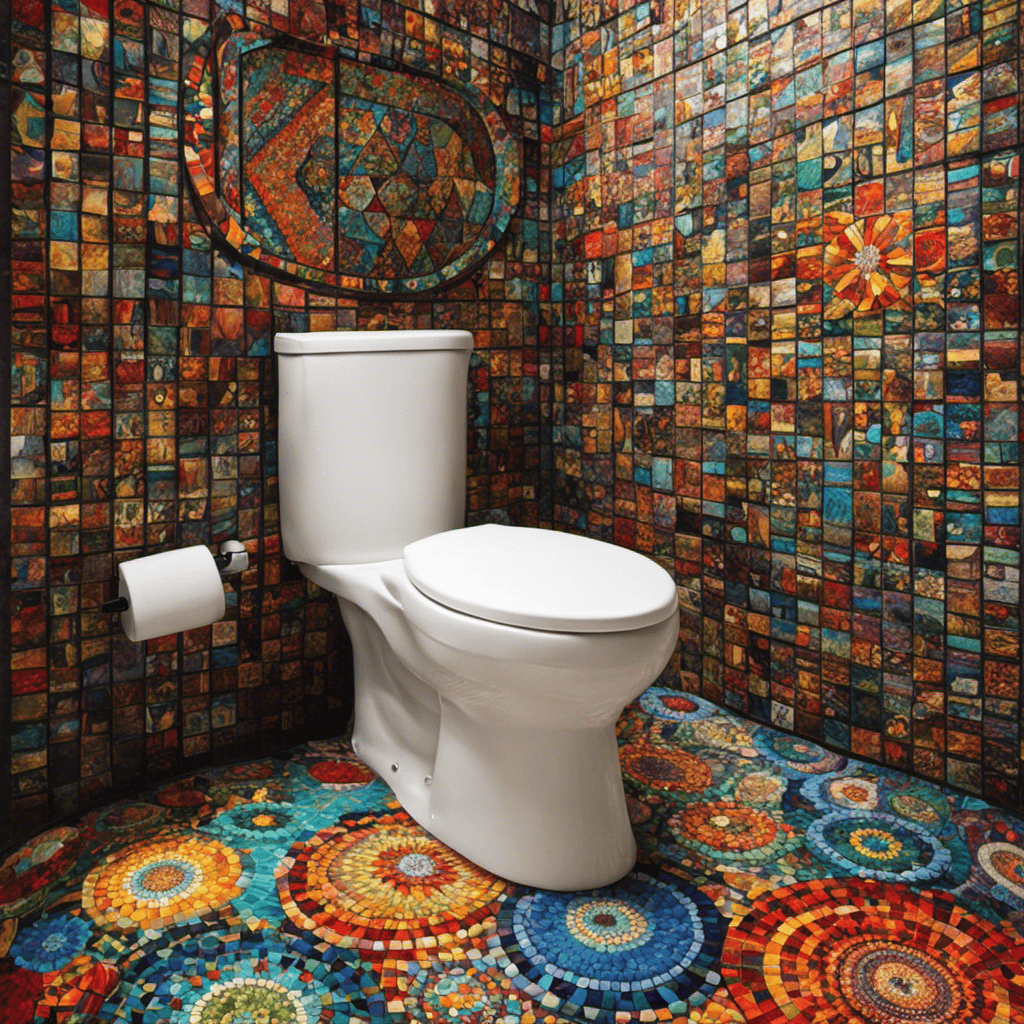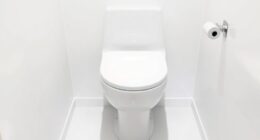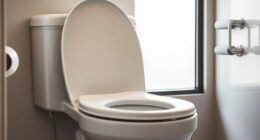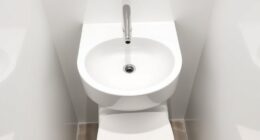Are you faced with the frustrating challenge of unclogging a toilet with a stubborn sponge stuck in it? Fear not, for we have the solution you seek.
In this concise guide, we will walk you through the steps to effectively clear the blockage and restore your toilet’s functionality.
With a careful assessment of the situation, the right tools at hand, and a methodical approach, you’ll soon have your toilet running smoothly once again.
Let’s dive in and conquer this task together.

Key Takeaways
- Assess the situation by observing the water level and determining the severity of the blockage
- Gather the necessary tools such as a plunger, toilet auger, or drain snake, as well as disposable gloves, a bucket, and towels
- Remove excess water by turning off the water shut-off valve, flushing the toilet, and using a bucket or cup to scoop out water
- Retrieve the sponge using a toilet auger, wet/dry vacuum, or a wire hanger, and consider contacting a professional plumber if needed.
Assess the Situation
First, we frequently assess the situation by observing the water level and determining the severity of the blockage. Identifying potential causes is crucial in order to determine appropriate techniques for unclogging a toilet with a sponge in it.
We start by checking the water level. If it’s high and close to overflowing, it indicates a severe blockage. In this case, it’s important to act quickly to prevent any further damage. We also look for any visible objects or debris that may be causing the blockage.
Once we’ve determined the severity and potential causes, we can then proceed to select the appropriate technique for unclogging the toilet with a sponge. This could involve using a plunger, a toilet auger, or a combination of both methods, depending on the situation.
Gather the Necessary Tools
To begin, we typically gather the necessary tools when unclogging a toilet with a sponge in it. Here are four essential items to have on hand:
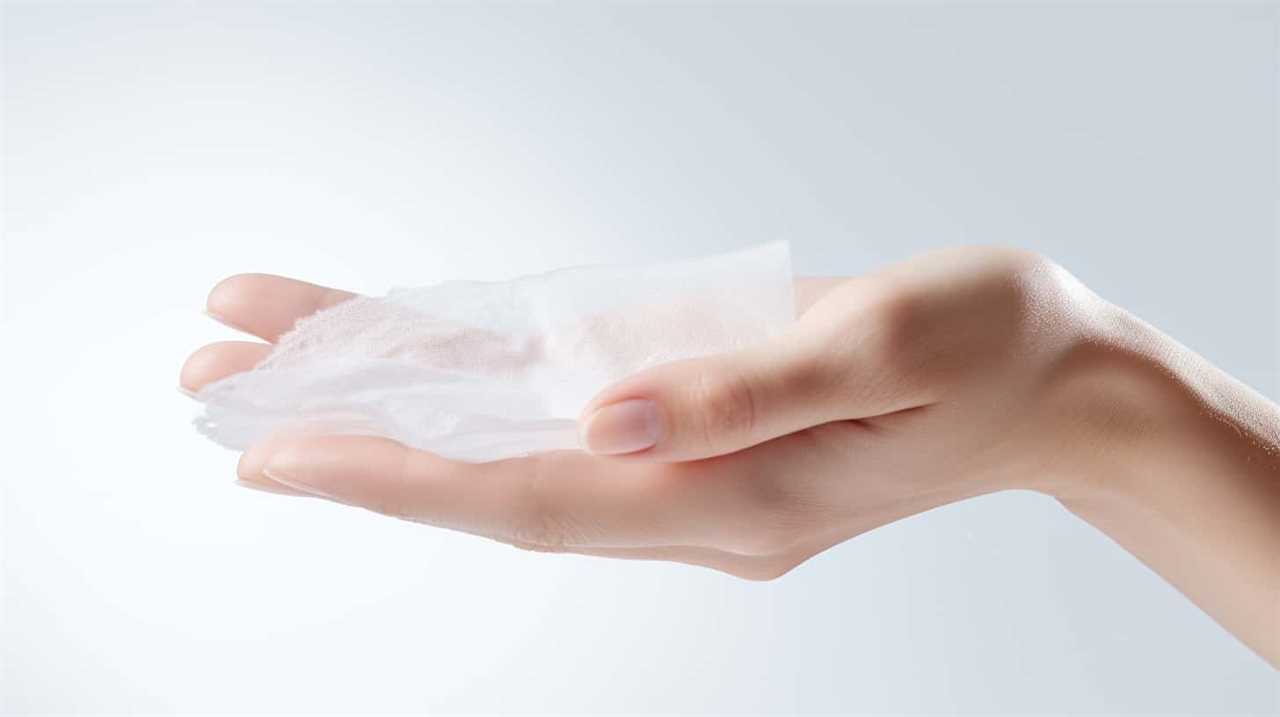
- Toilet plunger alternatives: Apart from a traditional plunger, it’s helpful to have other tools like a toilet auger or a drain snake. These can effectively break up and remove stubborn clogs.
- Gloves: It’s important to protect your hands from any potential mess or bacteria. Disposable gloves are a convenient option for this task.
- Bucket: Having a bucket nearby is useful for collecting water or any debris that may come out of the toilet during the unclogging process.
- Towels: Keep a few towels handy to quickly clean up any spills or drips that may occur while working on unclogging the toilet.
Remove Excess Water
Now, let’s continue our process of unclogging the toilet with a sponge in it by draining away the excess water. Removing the excess water is crucial to prevent any potential overflow and make it easier to use a plunger effectively.
To start, locate the water shut-off valve, usually located behind or near the toilet. Turn the valve clockwise to shut off the water supply.
Next, flush the toilet once to remove any remaining water in the tank. Use a bucket or a cup to scoop out as much water as possible from the bowl. Be careful not to spill any water on the floor.
Once the excess water is removed, you can now proceed with using a plunger to unclog the toilet successfully.
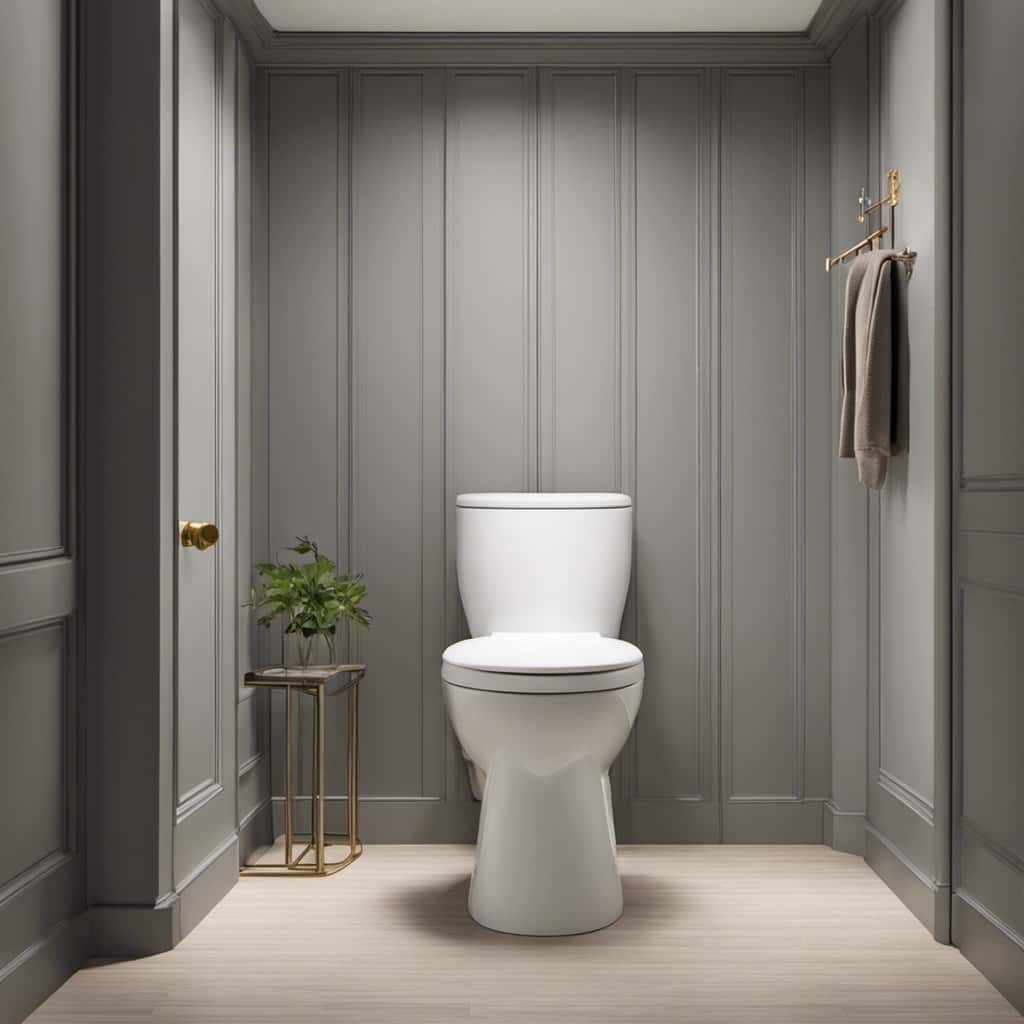
Retrieve the Sponge
After draining away the excess water, how do we retrieve the sponge from the clogged toilet? Here are some sponge retrieval techniques to help you out:
- Use a toilet auger: Insert the auger into the toilet bowl and rotate it to catch the sponge. Slowly pull it out, being careful not to damage the porcelain.
- Try a wet/dry vacuum: Use a wet/dry vacuum with a hose attachment to suck out the sponge. Make sure to create a tight seal around the sponge to ensure effective retrieval.
- Use a wire hanger: Straighten out a wire hanger and create a hook at one end. Insert it into the toilet drain and carefully fish out the sponge.
- Call a professional plumber: If all else fails, it’s best to leave it to the experts. A professional plumber will have the necessary tools and expertise to safely retrieve the sponge.
To prevent toilet clogs in the future, remember to:
- Avoid flushing non-flushable items like wipes, cotton balls, and paper towels.
- Use less toilet paper to reduce the chances of clogs.
- Regularly clean your toilet bowl to prevent build-up.
- Consider installing a toilet plunger to quickly address minor clogs before they become major issues.
Clear the Blockage
How can we effectively clear the blockage caused by the sponge in the clogged toilet? Clearing a toilet blockage can be a straightforward process if approached correctly. Here are some steps to help us clear the blockage:
- Turn off the water supply to prevent any overflow or flooding.
- Use a plunger to create pressure and dislodge the blockage. Make sure to cover the entire drainage hole and plunge vigorously.
- If the plunger doesn’t work, try using a toilet auger or a plumbing snake. Insert it into the toilet and rotate it to break up the blockage.
- Flush the toilet to check if the blockage has been cleared. If not, repeat the plunging or augering process.
To prevent toilet blockages in the future, it’s important to be aware of the common causes and take preventive measures. Some common causes include flushing excessive toilet paper, flushing non-flushable items, and inadequate water flow.
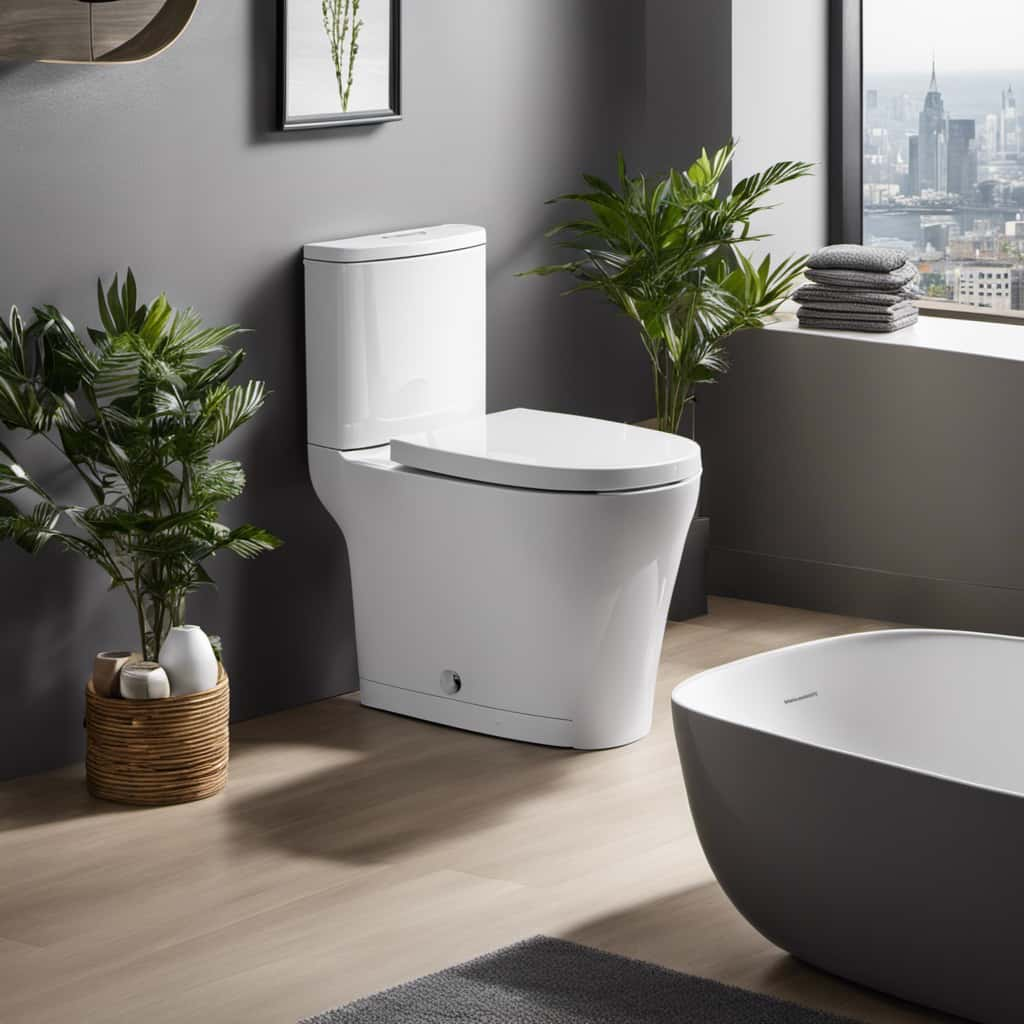
To avoid toilet clogs, we should:
- Only flush toilet paper and waste
- Avoid flushing feminine hygiene products, baby wipes, and other non-flushable items
- Ensure sufficient water flow by using a toilet with a strong flush or using a bucket of water to assist flushing if necessary.
Frequently Asked Questions
Can I Use a Different Tool Instead of a Sponge to Unclog a Toilet?
Different alternatives to unclog a toilet without a sponge include using a plunger, a toilet auger, or a drain snake. Each option has its pros and cons, but we recommend using a plunger for its effectiveness and ease of use.
What Should I Do if the Toilet Overflows While Unclogging It?
If the toilet overflows while unclogging it, we must act swiftly to prevent water damage. Turn off the water supply valve, use towels to soak up excess water, and address the clog promptly to avoid further issues.
Is It Safe to Use Chemicals to Unclog a Toilet With a Sponge in It?
Using hot water is effective in unclogging a toilet with a sponge in it. Plunging the toilet with a sponge in it can cause damage. It is not safe to use chemicals in this situation.
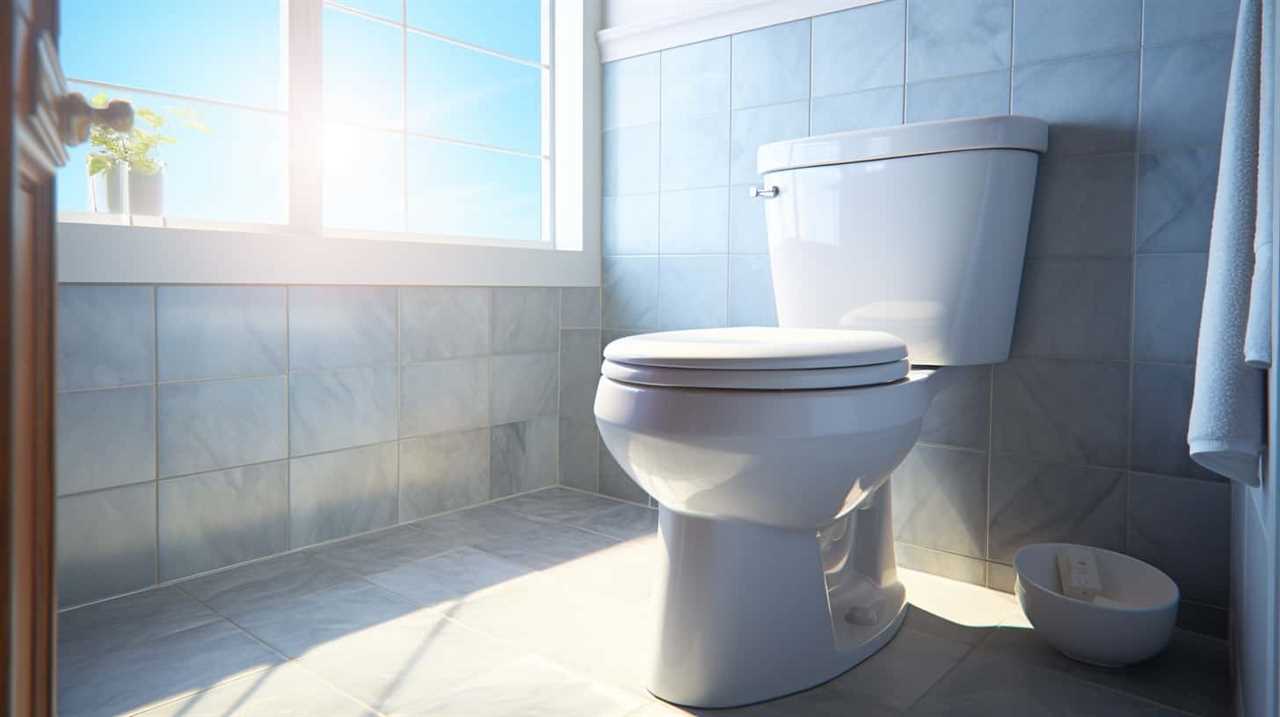
How Long Does It Usually Take to Unclog a Toilet With a Sponge in It?
To unclog a toilet with a sponge in it, the best techniques vary depending on the severity of the clog. It may take anywhere from a few minutes to a couple of hours to unclog a toilet with a sponge.
What Should I Do if the Sponge Gets Stuck in the Toilet During the Unclogging Process?
If the sponge gets stuck in the toilet during the unclogging process, we should avoid flushing again. Instead, we can use alternative methods like using a plunger or a snake to dislodge the sponge. However, there are potential risks involved, so caution is advised.
Conclusion
In conclusion, unclogging a toilet with a sponge can be a practical and effective solution. By following the steps outlined in this article, you can quickly and easily clear the blockage.
Although some may question the use of a sponge, it’s a versatile tool that can be easily cleaned and reused. By wearing gloves and taking proper precautions, you can ensure a hygienic and efficient unclogging process.
